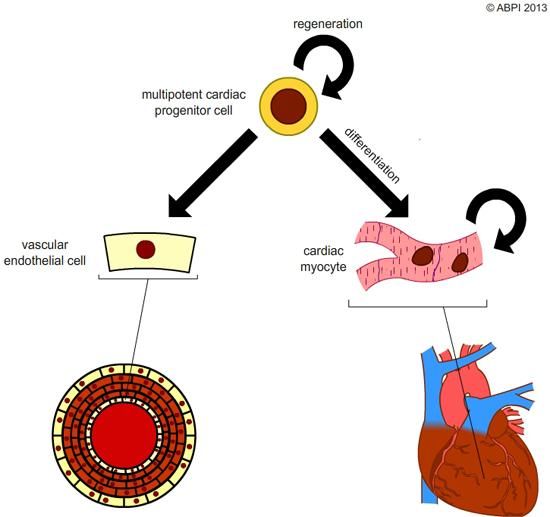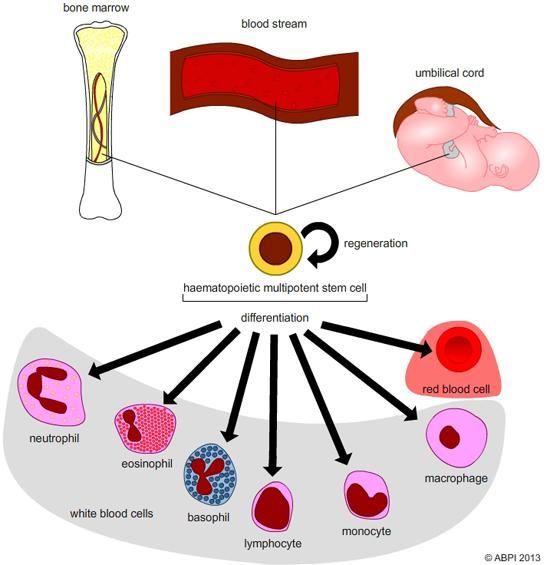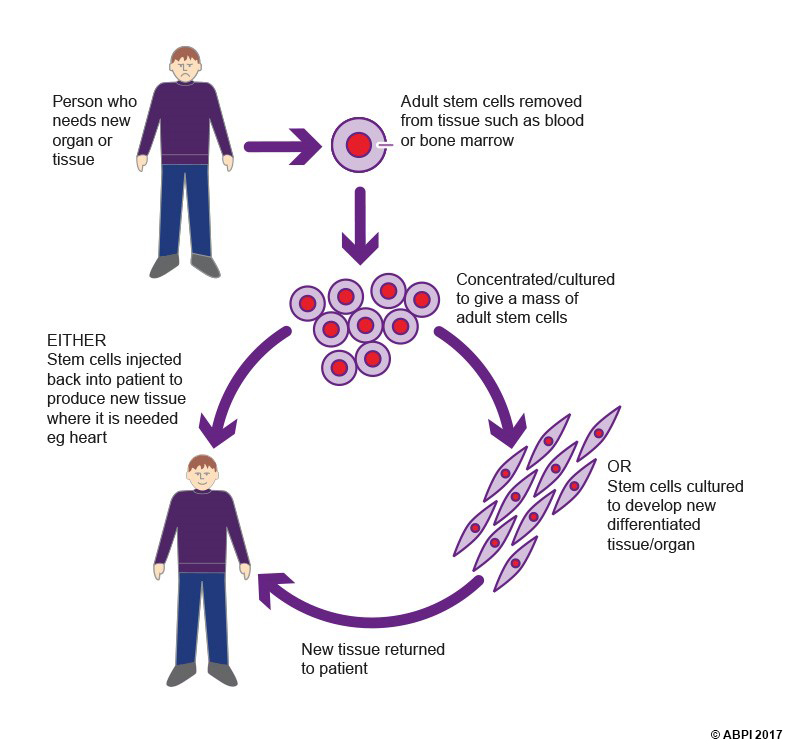This topic takes on average 55 minutes to read.
There are a number of interactive features in this resource:
 Biology
Biology
Not all stem cells are differentiated during the development of an embryo: there are multipotent stem cells present in adults (known as adult, somatic or tissue stem cells) which are partially differentiated and can therefore mainly form cells with limited functions in the same organ. Their role is to replace cells in that organ that have become damaged.
An example of adult stem cells are the cardiac progenitor cells found in mammalian hearts. These can differentiate into cardiomyocytes (heart muscle cells) and vascular cells, but not unrelated cell types such as intestinal cells. Therefore, if one cardiomyocyte is damaged and dies, either another cardiomyocyte can divide to replace it or a cardiac progenitor cell can differentiate to form a cardiomyocyte. There are multipotent progenitor cells in many organs throughout the body.

But don’t assume from their name that they can only be found in adults – adult in this context just means ‘not early-embryonic’! Therefore, any partially differentiated multipotent cell in an embryo, foetus or living human is an adult stem cell.
Cord blood cells - a type of multipotent cell found in the blood of the umbilical cord - are another type of adult stem cell often used in medicine as they can differentiate to form all types of blood cells. In fact, they are the same as the haematopoietic adult stem cells found in (and extracted from) the blood stream and from bone marrow (a spongy tissue found inside some bones), which also differentiate to form blood cells as shown in the diagram. You may have heard of a bone marrow transplant to treat leukaemia. In fact, this is a type of adult stem cell transplant using haematopoietic stem cells. They have been carried out successfully since the late 1950s. Stem cells from umbilical cords could be used instead – in fact stem cells are more easily extracted from cord blood than bone marrow – but they contain only a limited volume of blood and hence a relatively small number of stem cells.

Although adult stem cells hold a number of ethical advantages over embryonic stem cells (their production doesn’t involve the destruction of something that could grow into a human), they can’t be used in the same way. Adult stem cells are already partially differentiated, and so each type can form only a limited number of cell types. In addition, adult stem cells are only found in small numbers in the body, are hard to extract and are generally very difficult to grow in the laboratory - a major problem as large numbers of stem cells are required for research, and even more would be needed for successful therapies. Despite this, adult stem cells still offer the potential for useful treatments - especially because they can be returned to the patient without causing an immune response. Research is still in progress, however, to understand whether it is safer and more effective for stem cells to be injected straight back into the patient to be differentiated in the body, or to be differentiated in the lab before being returned to the patient.
